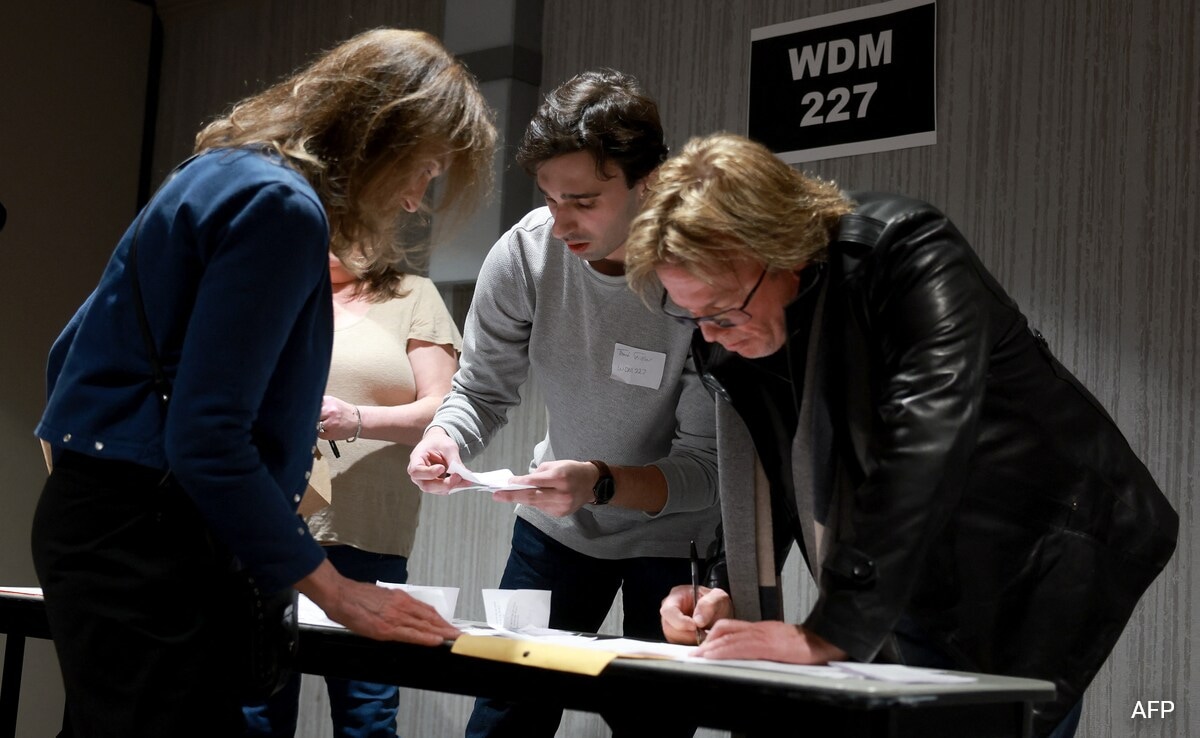
Representational Image
Seoul:
The 2024 US presidential election officially kicks off Monday, when voters in the rural farm state of Iowa head to school gymnasiums and public libraries to deliberate over who should become their party’s nominee for the White House.
This Midwestern state of three million people is proud of the unusual “caucus” system it employs to determine how many delegates will represent the respective candidates at the parties’ national nominating conventions in the summer.
What is a caucus?
At a caucus, participants physically show their candidate preference by gathering with other like-minded voters in a designated spot in the room — a sharp contrast to the confidentiality of filling out a paper ballot in a private voting booth.
Primary caucus voting, in which attendees are registered party members, happens in stages.
For the Democrats, candidates usually need the backing of at least 15 percent of voters present to qualify for a second round.
Supporters of candidates who fall short of that threshold then have three choices during a second round that immediately follows.
They can move to another part of the room to support another finalist candidate; they can try to persuade fellow voters to help them push their own candidate over the 15 percent hurdle; or they can not vote.
The procedure is similar for the Republicans, though there is no minimum vote threshold candidates must win to be allocated delegates.
Advocates of the quirky custom praise it as democracy in action, as citizens physically move around the room, sharing their views and collaborating to choose their leaders.
Iowa’s special status
In the vast majority of US states, the Republican and Democratic Parties hold primary elections to determine which candidates will win those states’ delegates.
But during the 2024 cycle, seven states will host caucuses for at least one of the two major parties throughout the winter and spring.
Political watchers turn a keen eye toward Iowa, as results in the state — which since the 1970s has scheduled voting to come first on the nation’s political calendar — often influence outcomes in the primary elections and caucuses that follow.
That means the size and effectiveness of candidates’ early operations in Iowa are important to their long-term success, despite the relatively few delegates up for grabs there.
The community involvement required at a caucus is not universally beloved: some voters are turned off by the idea of a long Monday evening debating — or arguing — with crowds of strangers.
And others struggle with logistical challenges presented by the frigid weather, work obligations or lack of childcare.
Detractors have blasted Iowa’s first-in-the-nation status, arguing a state with such a small population and whose demographics are much whiter than average should not be allowed to hold such an influential position.
In 2020, the system nearly broke down for the Democrats, when a new mobile app used by precinct officials — meant to offer more transparency and speed in vote counting — failed, offering up only partial tallies.
Final results were delayed for three days, and the state’s Democratic Party chair eventually resigned.
The 2024 cycle
The Iowa caucuses, which are usually held in February, will take place earlier than ever in 2024, on January 15.
The Democrats are running their operation in the state slightly differently this year: party members will still meet on caucus day to discuss candidates and other business, but will now indicate their preference for nominee via mail by March 5.
And there are far fewer Democrats running in the state this time around, as President Joe Biden seems likely to clinch the nomination.
On the Republican side, voters will choose among several candidates, though former president Donald Trump is so far polling ahead of his primary rivals.
(Except for the headline, this story has not been edited by NDTV staff and is published from a syndicated feed.)




